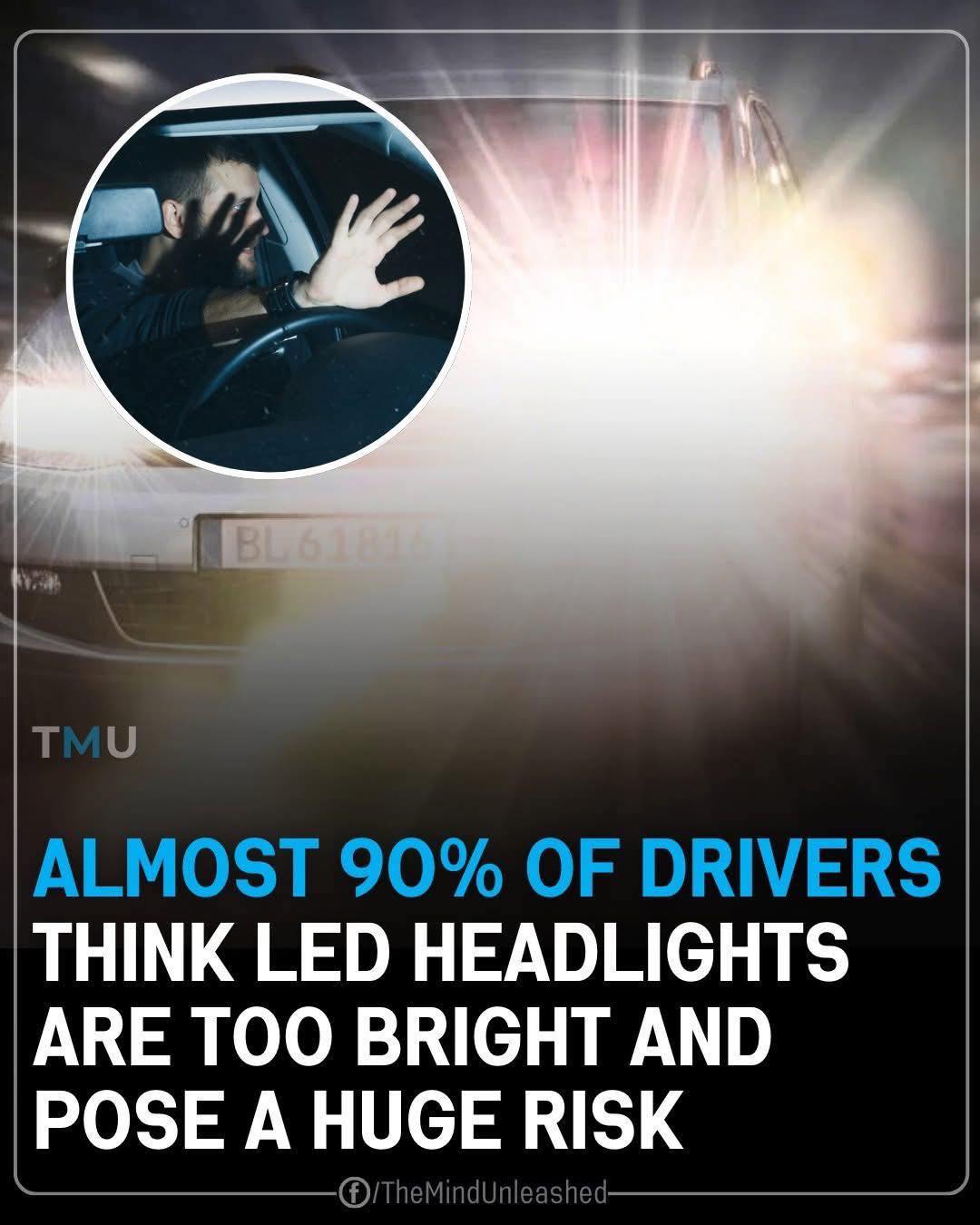Modern vehicles are packed with advanced technology, and one feature that stands out is the use of LED headlights. They’re praised for their sleek look and energy efficiency, making them a favorite among automakers and car owners alike. But while they might look sharp, a growing number of drivers are sounding the alarm: nearly 90% say these headlights are just way too bright, and many believe they pose a real danger on the road.

This overwhelming sentiment has sparked a heated conversation about how to balance technological innovation with public safety. LED headlights offer some clear advantages, but their intense brightness can temporarily blind oncoming drivers, creating serious safety concerns. It raises the question—are these upgrades truly making our roads safer, or are they inadvertently introducing new risks?
The Rise of LED Headlights
LED (Light Emitting Diode) technology has taken over the automotive industry in recent years. Gone are the days when halogen bulbs were the standard. Today, LED headlights are featured in most new vehicles, from budget-friendly models to luxury cars. Their popularity is largely thanks to several key benefits: they use less energy, last much longer, and provide a more focused, powerful beam of light compared to traditional bulbs.
From an environmental standpoint, LEDs are a major win. Halogen headlights generate a lot of heat, wasting energy in the process. LEDs, on the other hand, are far more efficient, converting most of their energy directly into light rather than heat. This not only reduces energy consumption but also supports broader efforts toward more eco-friendly vehicle designs.
Car designers also love LEDs because they offer greater flexibility. Their compact size allows for more creative headlight designs, giving vehicles a high-tech, modern look that many drivers find appealing. Plus, the brighter light promises better visibility—at least in theory—for nighttime driving.
The Downside of All That Brightness
However, brighter isn’t always better. While LED headlights provide excellent illumination for the driver using them, they can create major problems for everyone else on the road. Oncoming drivers often report feeling temporarily blinded when facing vehicles equipped with ultra-bright LEDs, especially on two-lane roads or during nighttime driving.
This momentary blindness, even if it lasts only a few seconds, can be incredibly dangerous. Those few seconds could be the difference between safely navigating a curve or missing a hazard on the road. For older drivers or those with vision sensitivities, the impact can be even more severe.
The problem is made worse by the focused nature of LED beams. Unlike older halogen bulbs, which cast a broader, softer light, LEDs project a sharper, narrower beam. If the headlights aren’t properly aimed—and let’s face it, many aren’t—the intense light can hit oncoming traffic directly at eye level.
A Growing Safety Debate
As more and more drivers voice their concerns, regulators and industry experts are taking notice. Some organizations are calling for stricter regulations on headlight brightness and better enforcement of headlight aiming standards. Others suggest that newer cars should come with automatic headlight leveling systems that adjust the angle of the lights based on the car’s position, load, and movement to prevent dazzling other drivers.
Automakers, meanwhile, continue to push LED technology even further. Some newer models now feature adaptive LED headlights that adjust their brightness and beam direction automatically depending on traffic conditions. This smart technology could help mitigate some of the issues associated with glare, but it’s not yet widely available, especially on more affordable vehicles.
Striking the Right Balance
There’s no denying that LED headlights have made driving safer for those behind the wheel by improving nighttime visibility. But safety should never come at the expense of others on the road. With nearly 90% of drivers reporting discomfort from overly bright headlights, it’s clear that a better balance needs to be found.
As the automotive world races forward with cutting-edge designs and energy-saving features, ensuring that new technologies work for everyone—not just the people who buy the latest models—will be critical. In the meantime, drivers can take a few simple steps to reduce their impact: making sure their headlights are properly aimed, dimming high beams when necessary, and staying alert to the effect their lights have on others.
Innovation and safety should go hand in hand—and when it comes to LED headlights, finding that middle ground could be the key to keeping everyone safer on the road.





